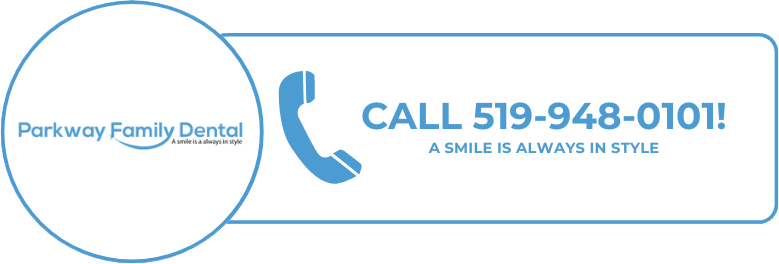Dental insurance plays a crucial role in maintaining your oral health for Ontario residents. Understanding your dental insurance options helps you make informed decisions about your dental care while managing costs effectively. This comprehensive guide explains how coverage in ontario works and provides practical strategies to maximize your benefits in 2025.
How Dental Insurance Works in Ontario
Ontario’s dental insurance system operates differently from universal healthcare. Most dental coverage comes through private insurance plans, employer benefits, or government programs for specific populations. Dental insurance can help cover the cost of dental procedures, typically covering 50-80% of basic dental services, with higher coverage for preventive care and lower coverage for major procedures.
Insurance companies categorize dental treatments into three main groups. Basic services include cleanings, fillings, dental exams, and routine checkups. Major dental procedures cover crowns, bridges, and root canals. Cosmetic dental treatments like teeth whitening are usually covered at a lower percentage or receive no coverage.
Most plans operate on a calendar year basis, resetting benefits each January. Annual maximums typically range from $1,000 to $2,000 per person. Some plans include waiting periods for major services, requiring members to wait 6-12 months before accessing certain benefits.
Types of Dental Coverage Available
Employer-Sponsored Plans
Many Ontario workers receive dental benefits through their employers. These group plans often provide better coverage rates and lower premiums than individual policies. Employer plans typically cover family members, making them valuable for households with children seeking access to dental insurance.
Group plans usually offer immediate coverage for preventive services and shorter waiting periods for major treatments. Some employers provide health and wellness accounts or health spending accounts that supplement dental benefits and help cover the cost of dental care.
Individual Insurance Plans
Individuals without employer coverage can purchase private dental insurance. These plans cost more than group coverage but provide essential protection against high dental costs. Insurance companies offer various coverage levels, from basic preventive care to comprehensive treatment options.
Individual plans often include longer waiting periods and lower annual maximums. However, they provide continuity of coverage for self-employed individuals and those between jobs.
Government Programs
Ontario provides dental coverage for specific populations through government programs:
- Ontario Works and Ontario Disability Support Program: Covers basic dental services for recipients
- Healthy Smiles Ontario: Provides dental care for children and youth from low-income families
- New Canadian Dental Care Plan (CDCP dental): Federal program launched in 2024 for eligible seniors and expanding to other groups
Eligible individuals can qualify for the cdcp based on income and age requirements. Coverage under the cdcp varies by service type and helps cover preventive services like cleanings and basic treatments.

Maximizing Your Dental Insurance Benefits
Understanding Your Plan Details
Review your insurance policy documents carefully to understand coverage and benefits, deductibles, and exclusions. Know your annual maximum and track your usage throughout the year. Understanding various dental insurance plans prevents surprises and helps you plan your dental treatments effectively.
Contact your insurance provider directly if you have questions about coverage. Many companies offer online portals where you can check benefits, submit claims, and track reimbursements. Insurance can sometimes feel overwhelming, but proper understanding leads to better oral health outcomes.
Timing Your Treatments Strategically
Schedule major dental work early in the year when your annual benefits reset. This approach ensures you have maximum coverage available for expensive procedures. If you need extensive treatment, consider spreading it across two calendar years to access benefits twice.
Plan routine cleanings and checkups to fall within your benefit year. Insurance often covers two cleanings annually, so schedule appointments six months apart to maximize preventive benefits and support maintaining your oral health.
Coordinating with Family Coverage
If both spouses have dental insurance, coordinate coverage to maximize benefits. Some families can claim treatments under both plans, though total reimbursement cannot exceed the actual cost of treatment.
Submit claims to the primary insurance first, then file remaining costs with the secondary plan. This coordination can significantly reduce out-of-pocket expenses for major treatments.
Common Insurance Terms and Concepts
Deductibles and Co-payments
Deductibles represent the amount you pay before insurance coverage begins. Annual deductibles typically range from $50 to $200 per person or family. Co-payments are fixed amounts you pay for specific services, regardless of insurance coverage.
Understanding these costs helps you budget for dental care and compare different insurance options effectively.
Pre-authorization and Predetermination
Some insurance plans require pre-authorization for major treatments. This process involves submitting treatment plans to your insurance company for approval before beginning work. Pre-authorization prevents coverage disputes and ensures you understand your benefits.
Predetermination provides estimates of coverage for proposed treatments. While not binding, predetermination helps you understand potential costs and plan accordingly.
Fee Schedules and Usual and Customary Charges
Insurance companies use fee schedules to determine payment amounts for different procedures. These schedules may not reflect actual dental fees, leaving patients responsible for the difference.
Usual and customary charges represent average fees for dental services in your geographic area. Insurance companies use these figures to calculate benefit payments, which may be lower than your dentist’s actual fees.
Choosing the Right Dental Insurance Plan
Evaluating Coverage Options
Compare different types of dental insurance plans based on your specific needs and budget. Dental insurance typically covers different service categories at varying percentages. Consider factors like:
- Annual maximums and deductibles
- Coverage percentages for different service categories
- Network restrictions and preferred providers
- Waiting periods for major services
- Orthodontic coverage for children
Network Considerations
Many insurance plans include provider networks offering reduced fees for covered services. Staying within your network can significantly reduce costs, but may limit your choice of dental providers and access to comprehensive dental care.
Consider the quality and convenience of network dentists when selecting insurance plans. Parkway Family Dental works with numerous insurance providers to help patients maximize their benefits while receiving quality care and supporting dental health.
Evaluating Cost vs. Benefits
Calculate the total cost of insurance premiums against potential benefits. Consider your family’s dental history and likely future needs when making this evaluation. Young families with children may benefit from comprehensive coverage, while older adults might prioritize major service coverage.
Working with Your Dental Office
Insurance Verification and Claims Processing
Choose a dental office that handles insurance verification and claims processing. This service saves time and ensures accurate billing. Many offices submit claims directly to insurance companies, reducing your administrative burden.
Parkway Family Dental provides comprehensive insurance support, helping patients understand their benefits and maximize coverage. The experienced team works directly with insurance companies to streamline the claims process.
Understanding Treatment Estimates
Request detailed treatment estimates that include insurance coverage information. Quality dental offices provide written estimates showing expected insurance payments and your responsibility. This transparency helps you make informed decisions about treatment timing and options.
Payment Options and Financing
Many dental offices offer payment plans and financing options for treatments not fully covered by insurance. These options help you access necessary care while managing costs effectively.
2025 Updates and Changes
Canadian Dental Care Plan Expansion
The federal Canadian Dental Care Plan continues expanding in 2025, potentially affecting private insurance benefits. Stay informed about eligibility requirements and how government coverage interacts with private plans.
Technology and Digital Claims
Digital claims processing continues improving, with faster reimbursements and better tracking capabilities. Many insurance companies now offer mobile apps for claims submission and benefit tracking.
Preventive Care Emphasis
Insurance companies increasingly emphasize preventive care to reduce long-term costs. Many plans now offer enhanced coverage for preventive services, including additional cleanings and fluoride treatments.
Managing Costs and Maximizing Value
Preventive Care Priority
Focus on preventive care to avoid expensive treatments later. Regular cleanings, checkups, and early intervention prevent minor issues from becoming major problems. Most insurance plans provide excellent coverage for preventive services.
Flexible Spending Accounts
If available through your employer, use flexible spending accounts or health savings accounts for dental expenses. These accounts allow you to pay for dental care with pre-tax dollars, reducing your overall costs.
Combining Insurance with Other Savings
Consider supplementing insurance with personal savings or dedicated dental savings accounts. This approach provides additional resources for treatments exceeding insurance coverage.
Making the Most of Your Dental Benefits
Understanding dental insurance helps you maintain optimal oral health while managing costs effectively. Regular preventive care, strategic treatment timing, and working with experienced dental professionals maximize your insurance benefits.
Parkway Family Dental in Windsor, Ontario, specializes in helping families navigate dental insurance and maximize their benefits. The knowledgeable team provides comprehensive care while working with various insurance providers to ensure patients receive the coverage they deserve.
Take action today by reviewing your current dental insurance coverage and scheduling your next appointment. Understanding your benefits and working with a trusted dental provider ensures you receive the care you need while making the most of your dental insurance in 2025.




